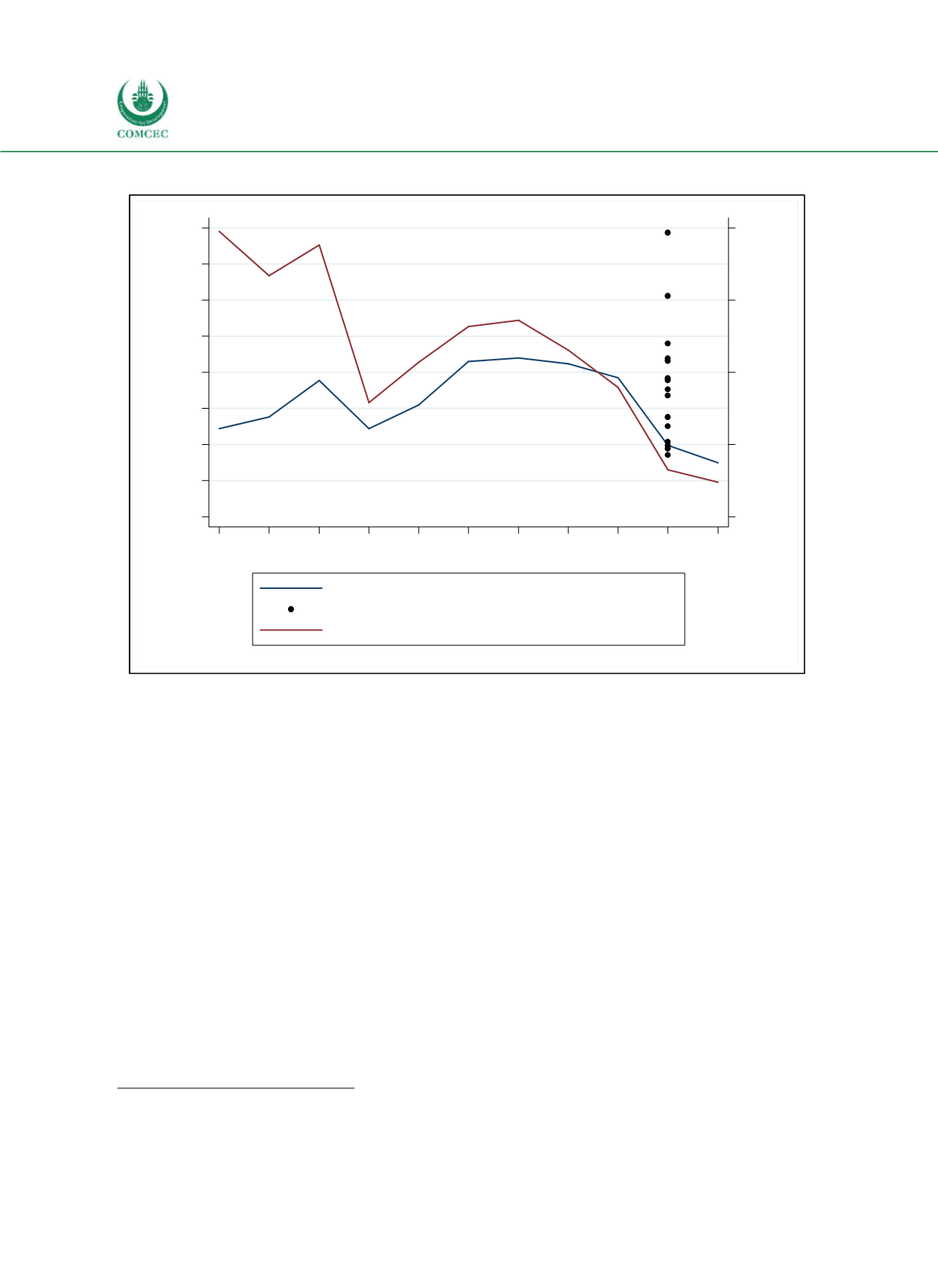

Improving Public Debt Management
In the OIC Member Countries
48
Figure 3-4: Oil Price Developments and Net Lending
Sources: Regional Economic Outlook (2016), WEO (2016), OPEC (2016), Bloomberg (2015), RAM Ratings (Brunei)
(2017), calculations by the Ifo Institute.
Several oil rich OIC countries have accumulated substantial government assets, which can be
used to absorb the incurring deficits. The capacity of OIC countries to absorb deficits by selling
government assets and the deterioration of fiscal buffers in some countries is illustrated in
Figure 35, which shows net debt as a share of GDP calculated as gross debt minus government
assets.
8
Net debt in OIC countries has increased since 2014, when governments started to sell
assets to finance budget deficits.
8
General government net debt refers to gross debt of the general government minus its financial assets in the form of debt
instruments. Examples of financial assets in the form of debt instruments include currency and deposits, debt securities,
loans, insurance, pension, and standardized guarantee schemes, and other accounts receivable.
Libya
Brunei
Algeria Bahrain
Oman Saudi Arabia
Kazakhstan
Iran
UAE
Iraq
Qatar
Kuwait
Azerbaijan
Turkmenistan
Nigeria
-10
-5
0
5
10
Share of GDP (in %)
0
25
50
75
100
125
150
175
200
U.S. Dollars
2006 2007 2008 2009 2010 2011 2012 2013 2014 2015 2016
Year
Oil price per barrel (left)
Fiscal break-even oil price per barrel (left)
Average net lending in oil producing OIC countries (right)
















